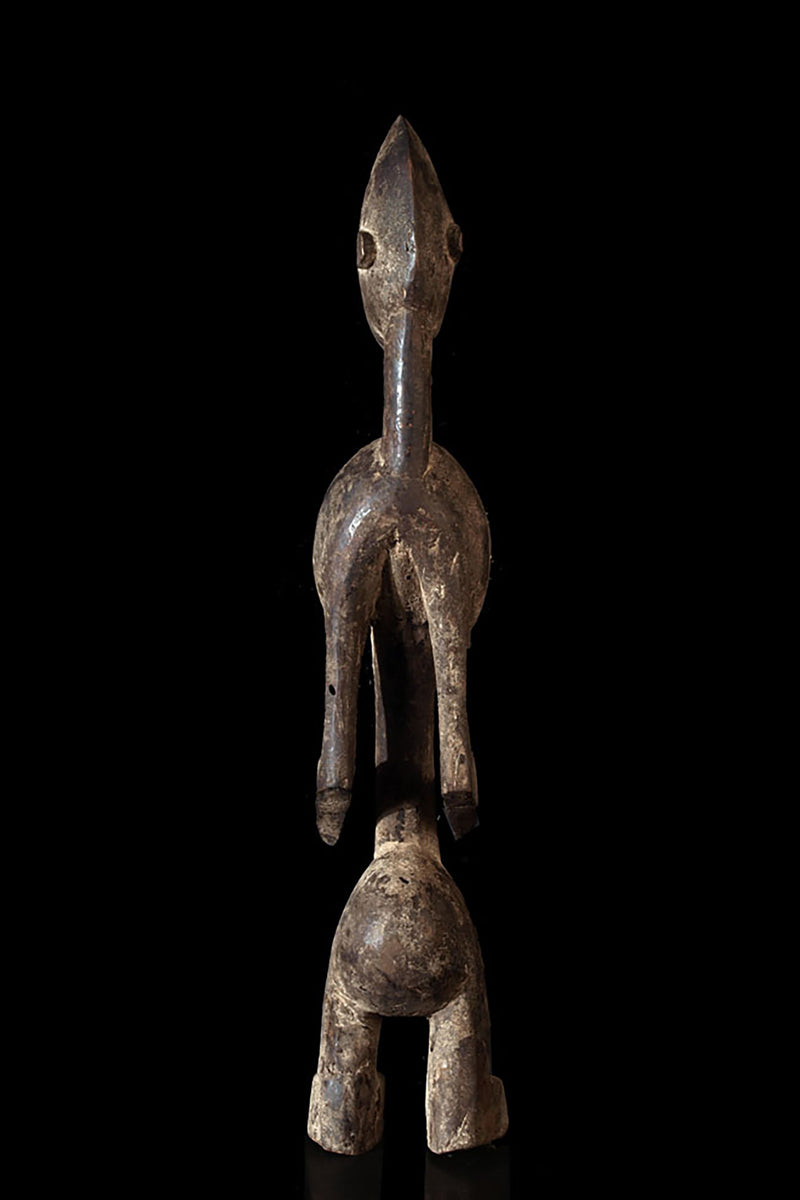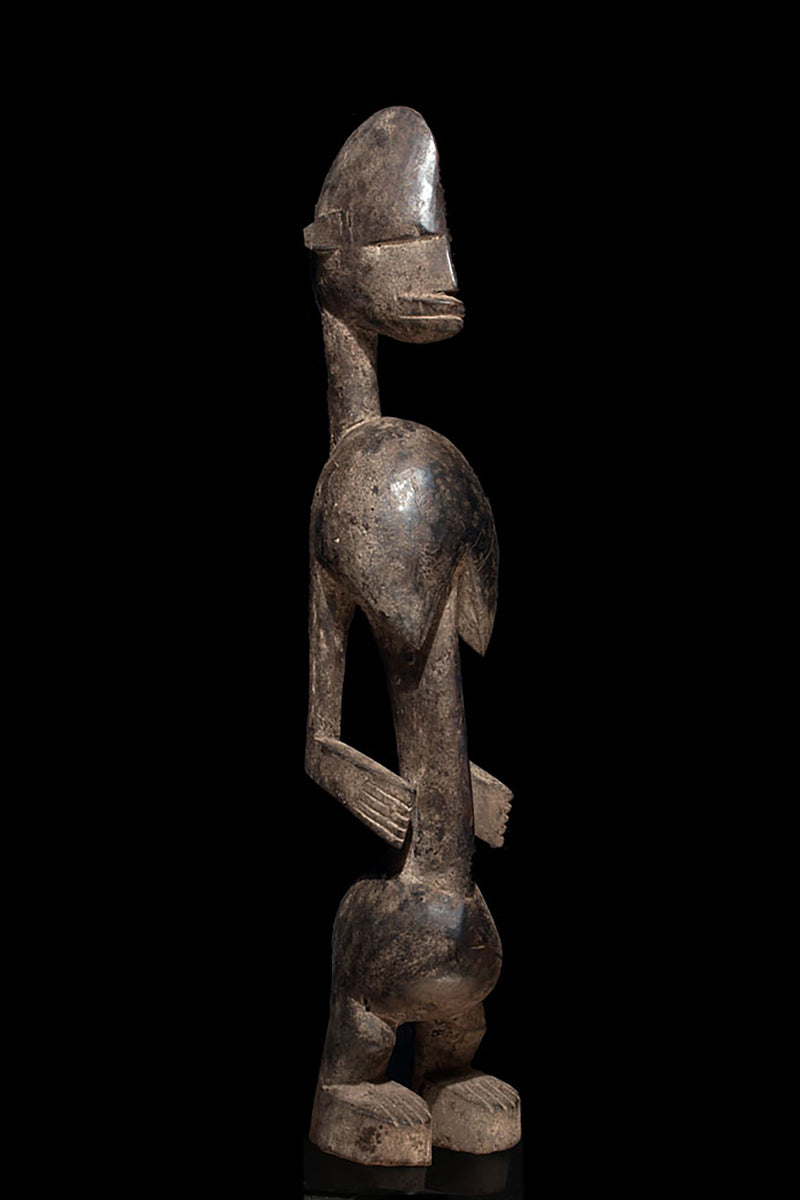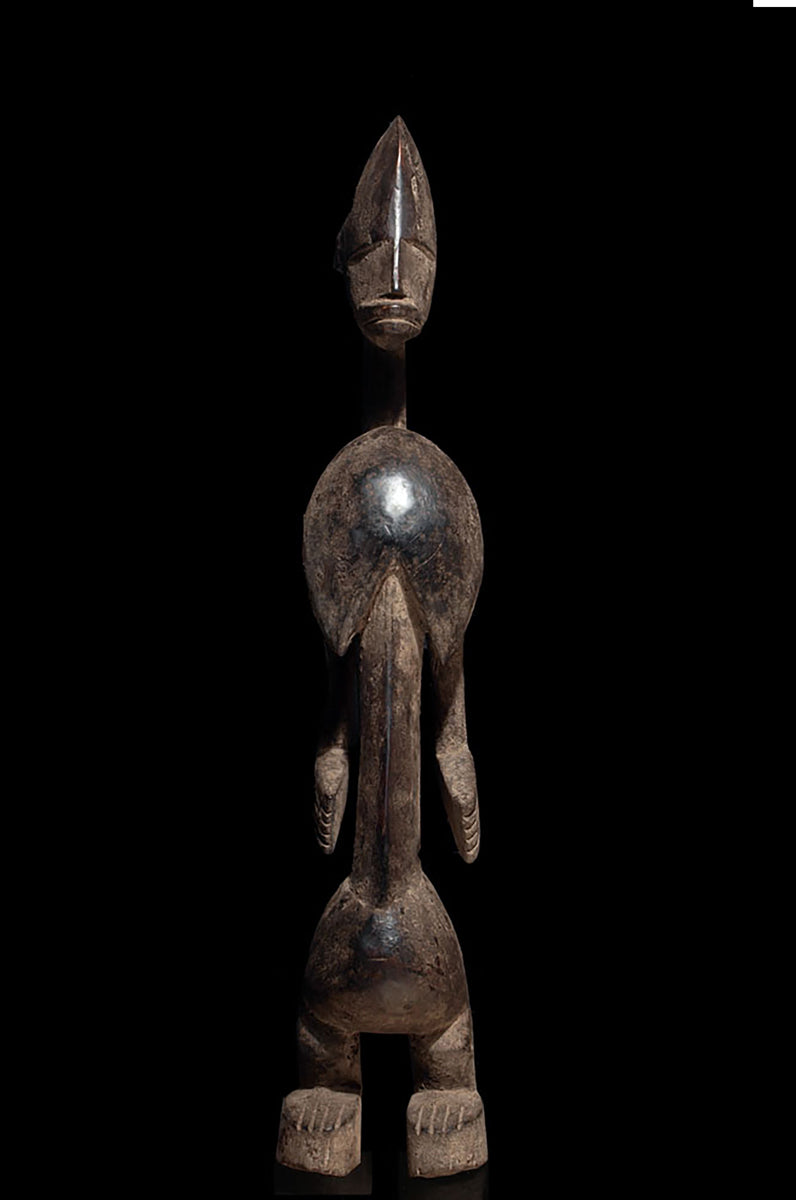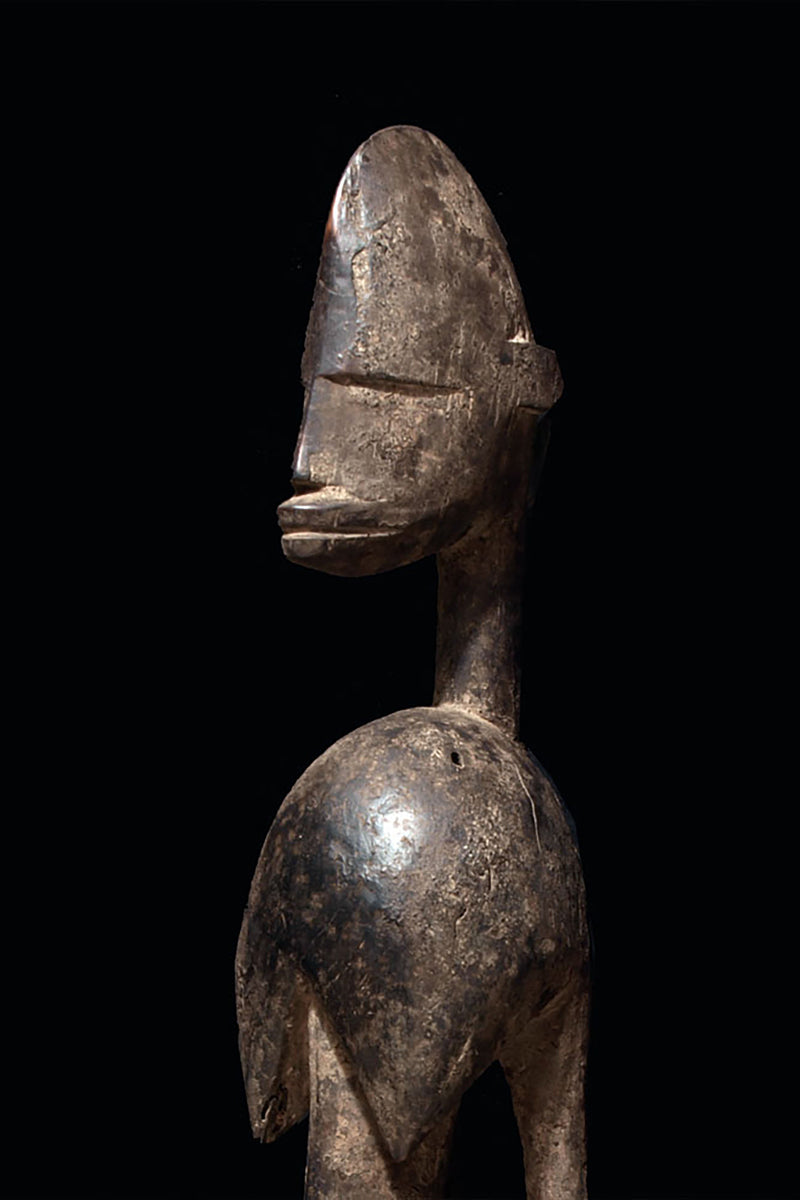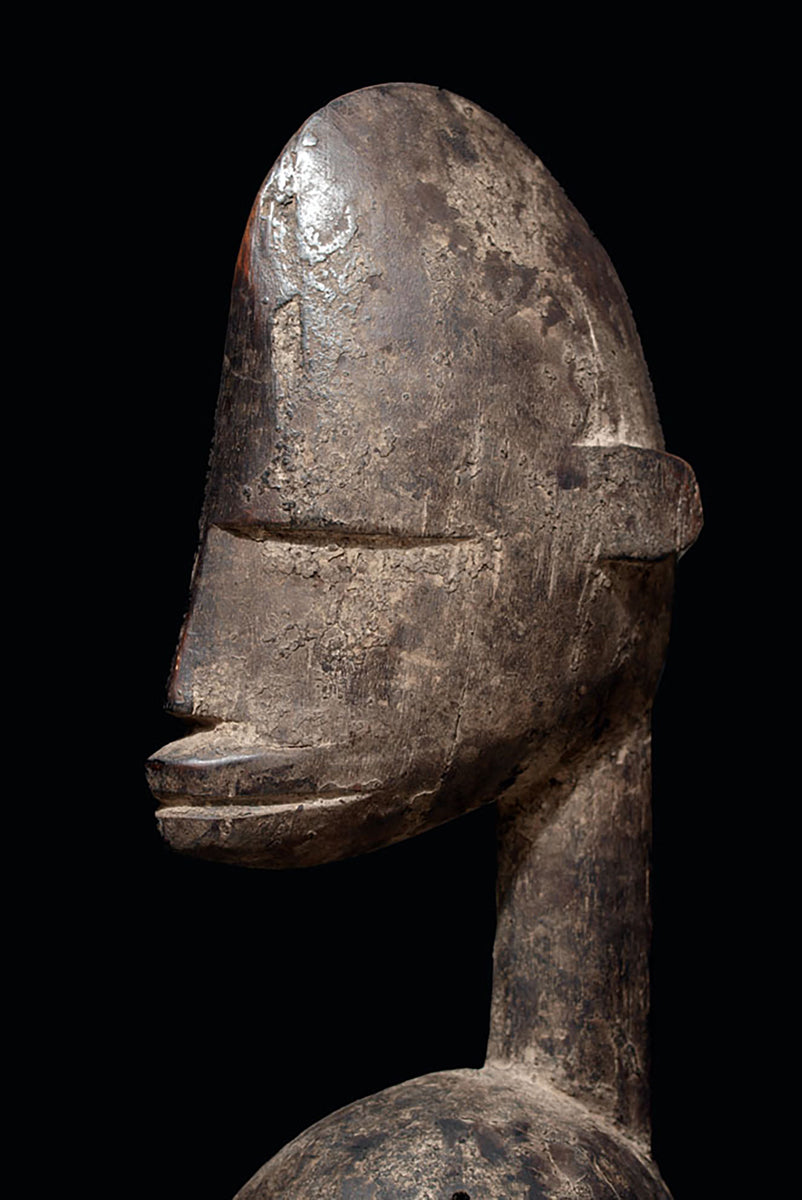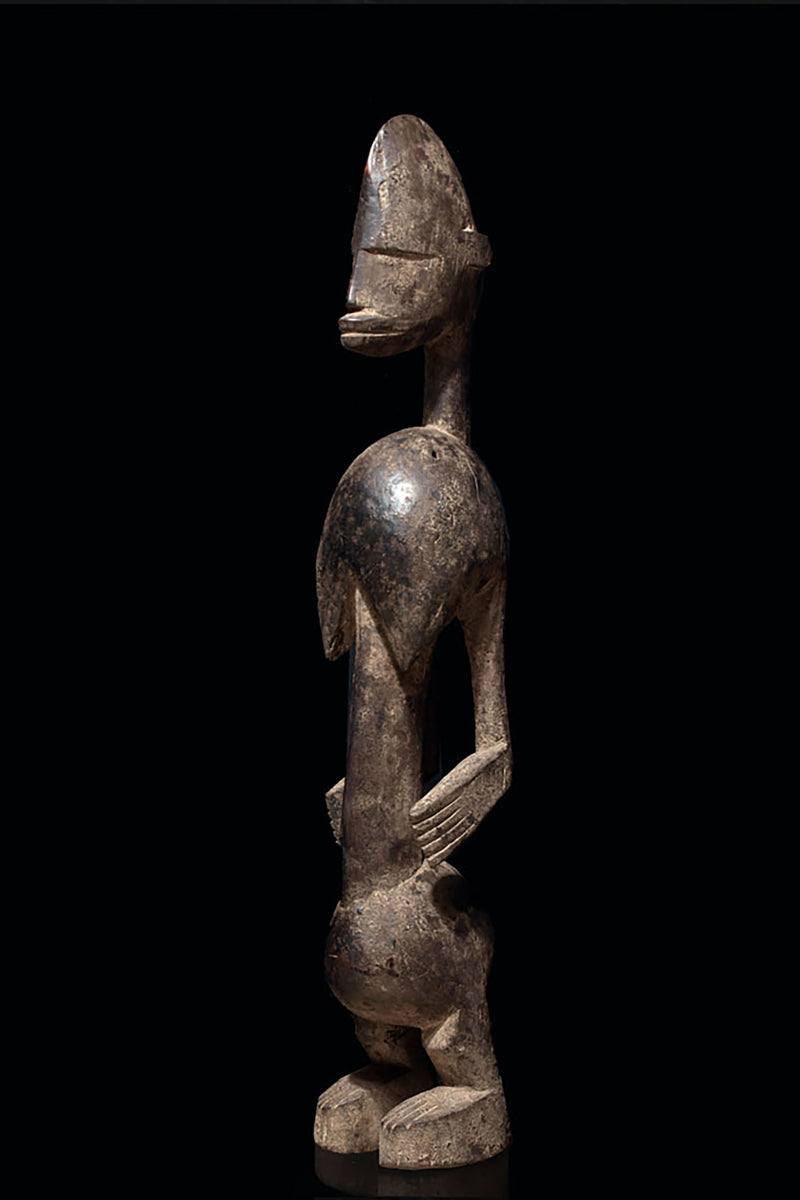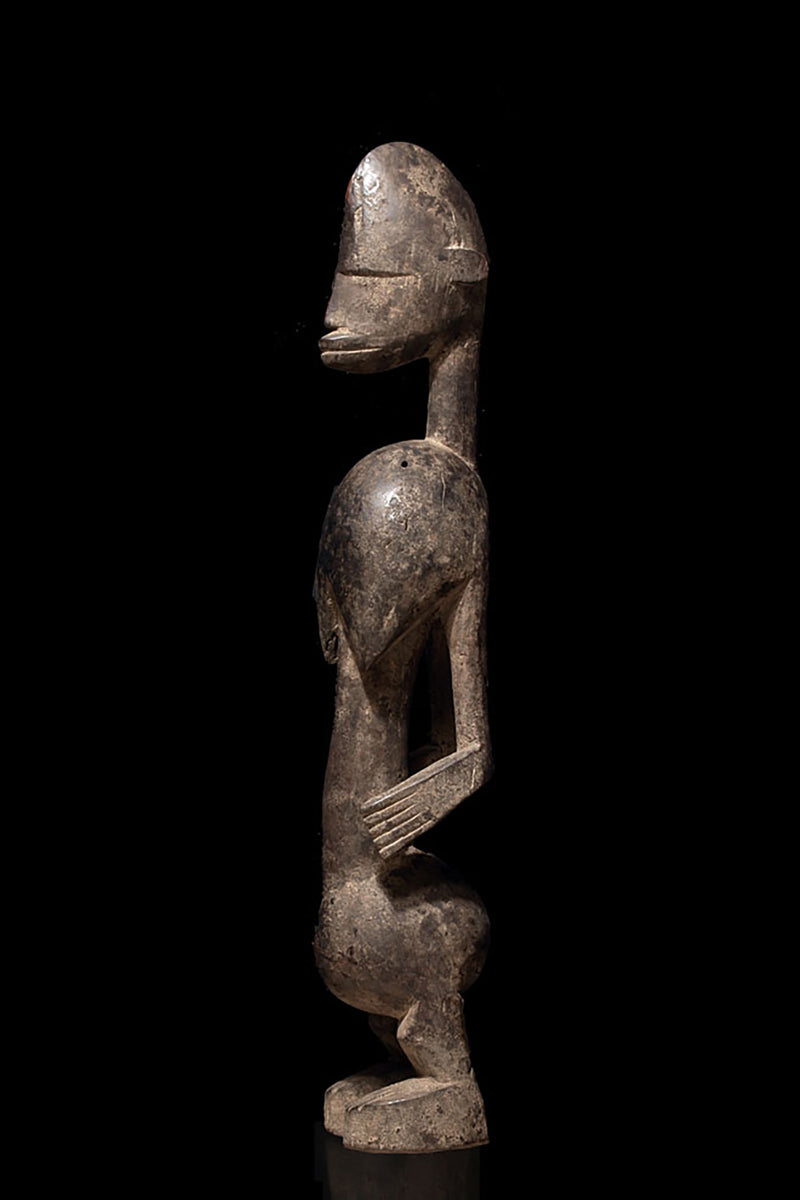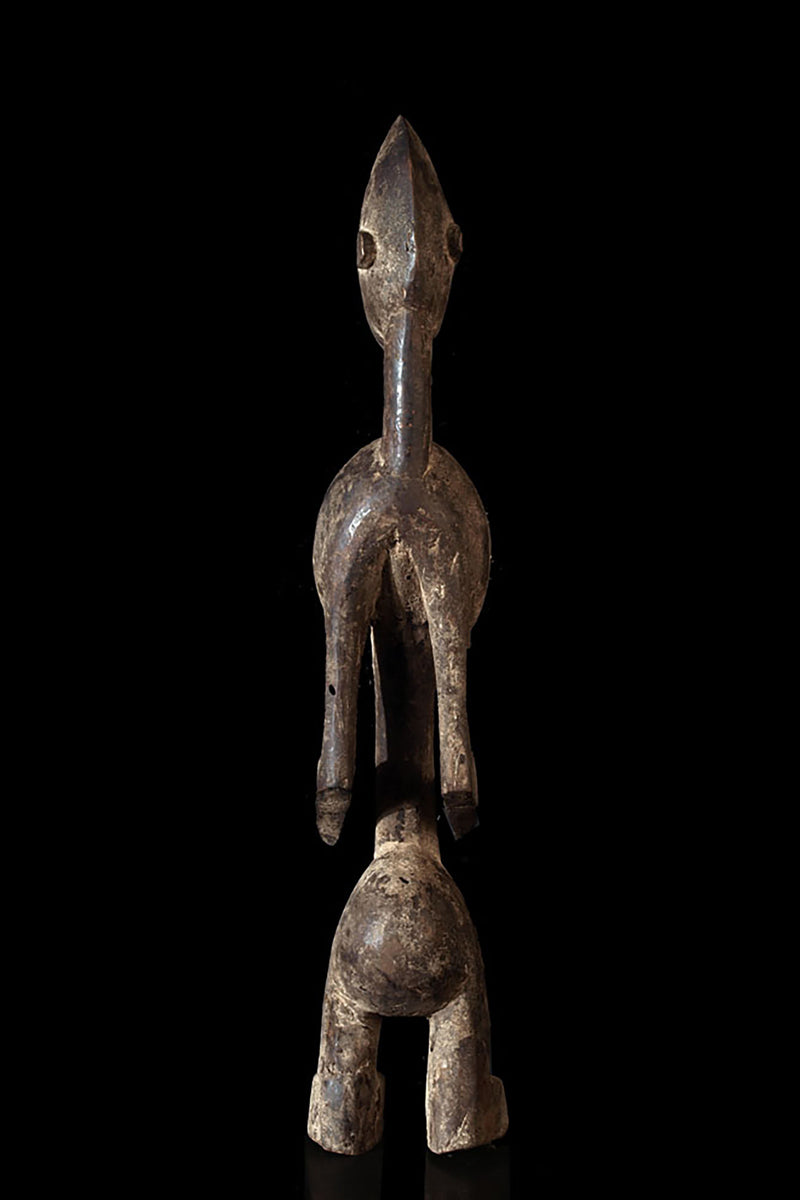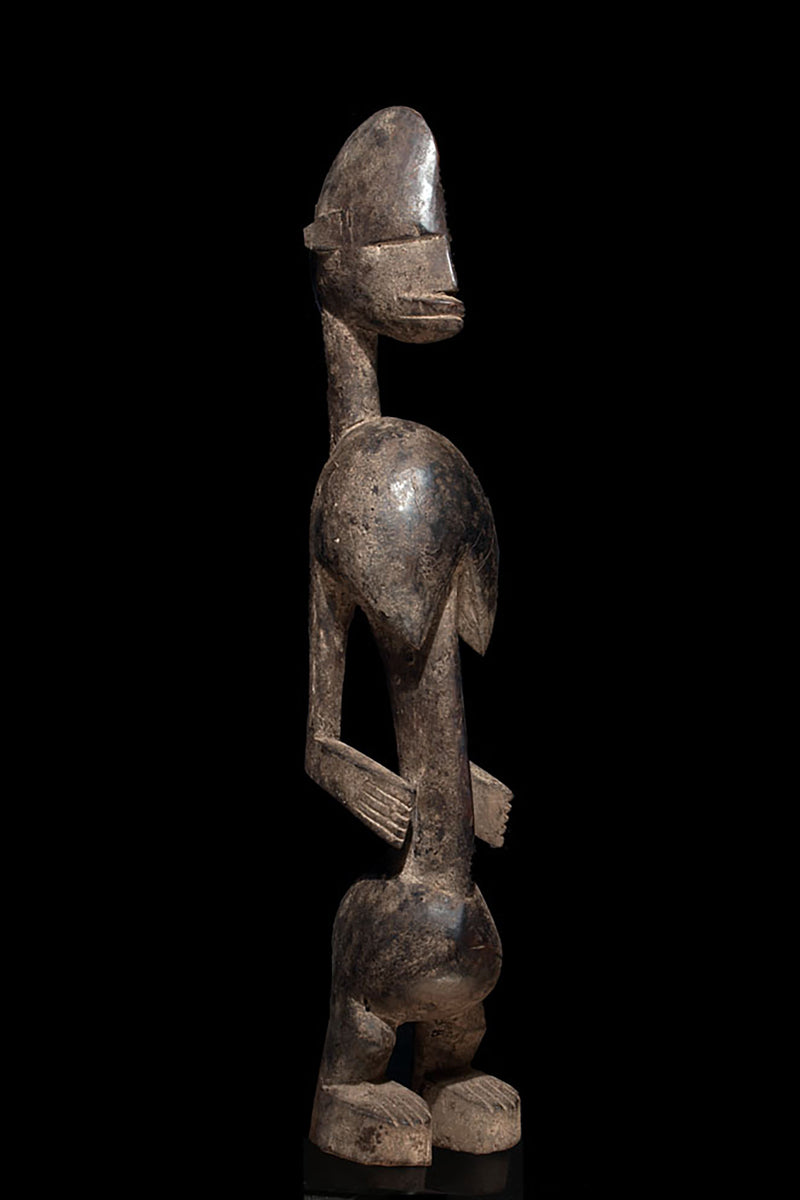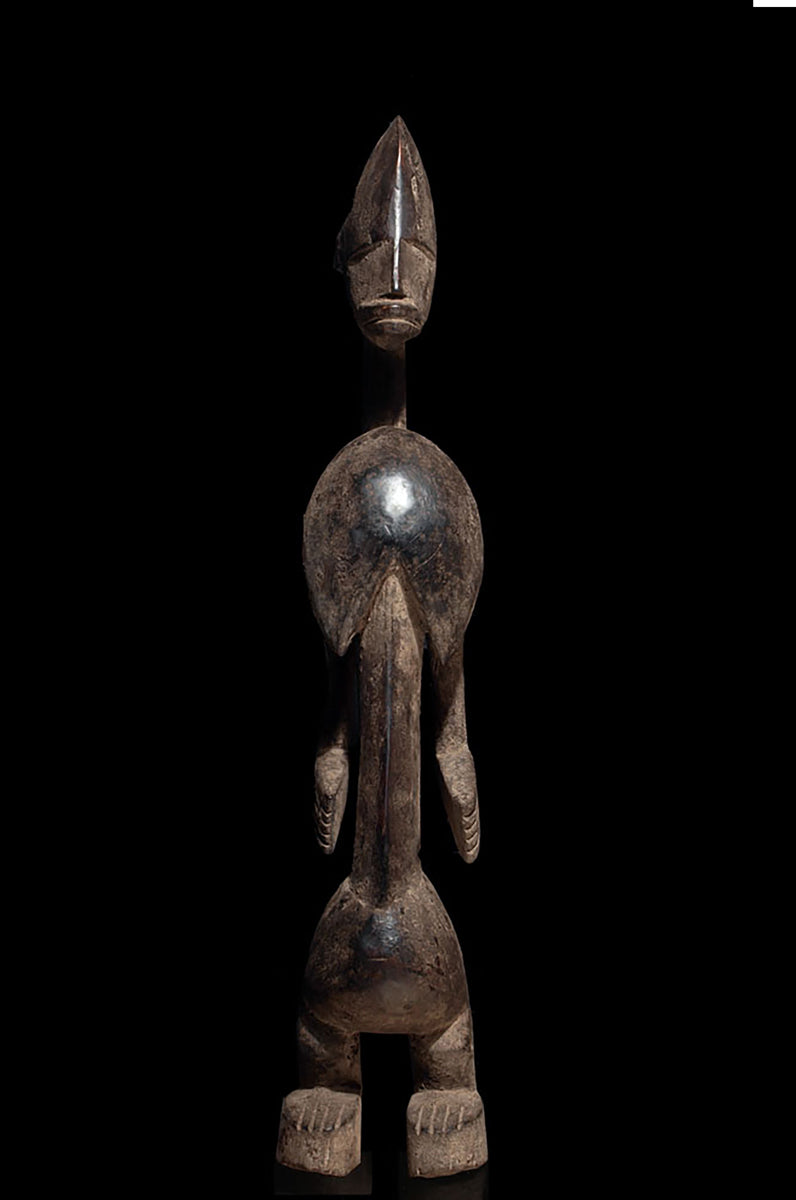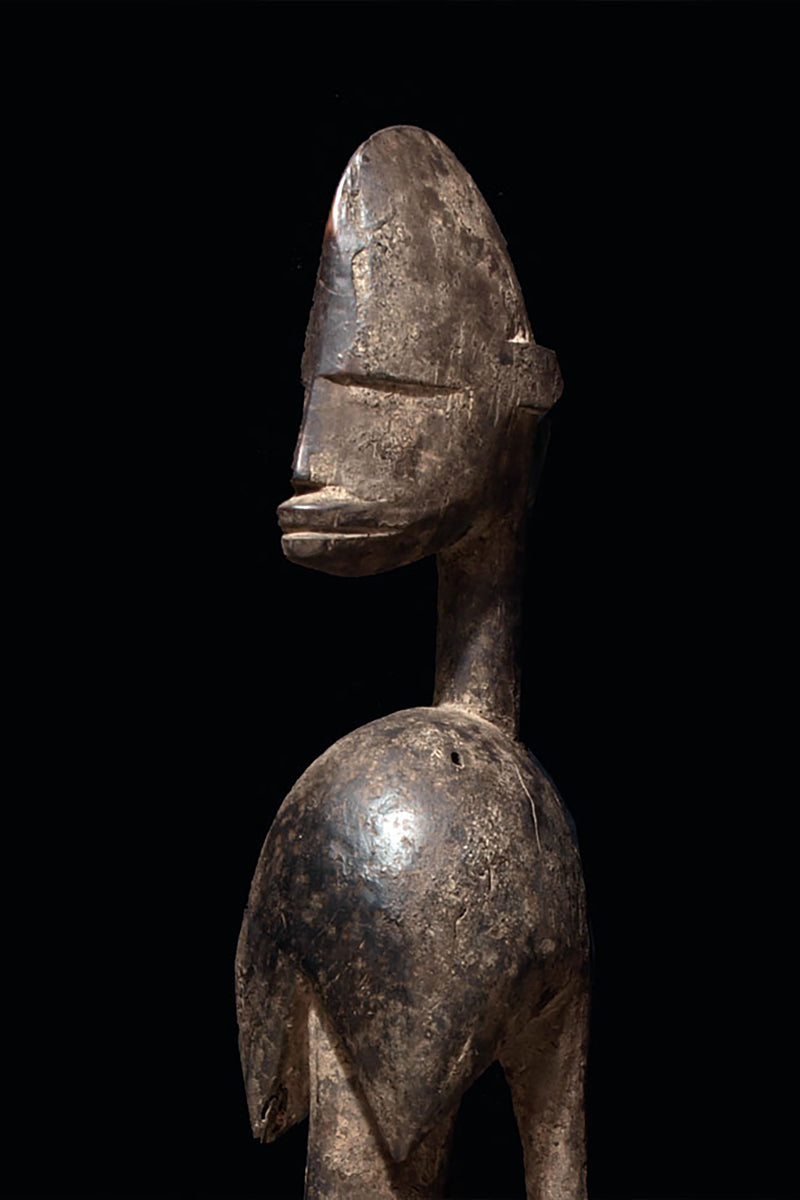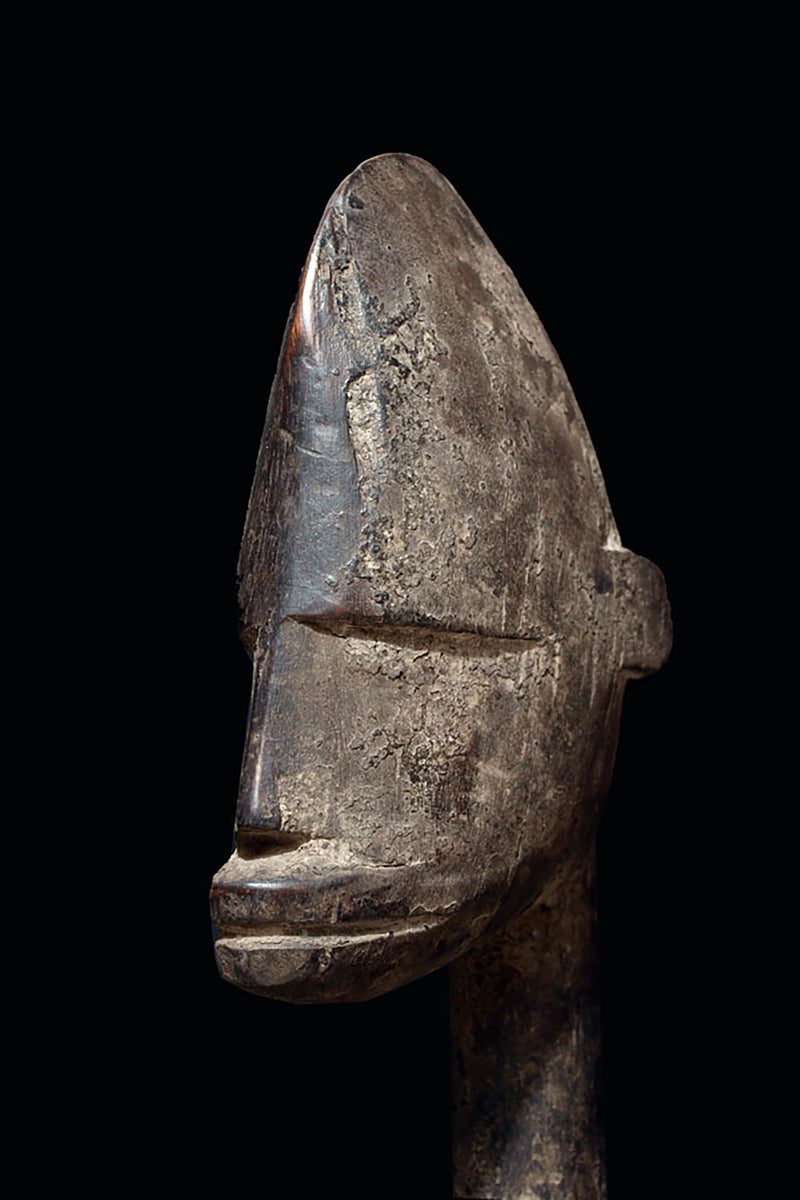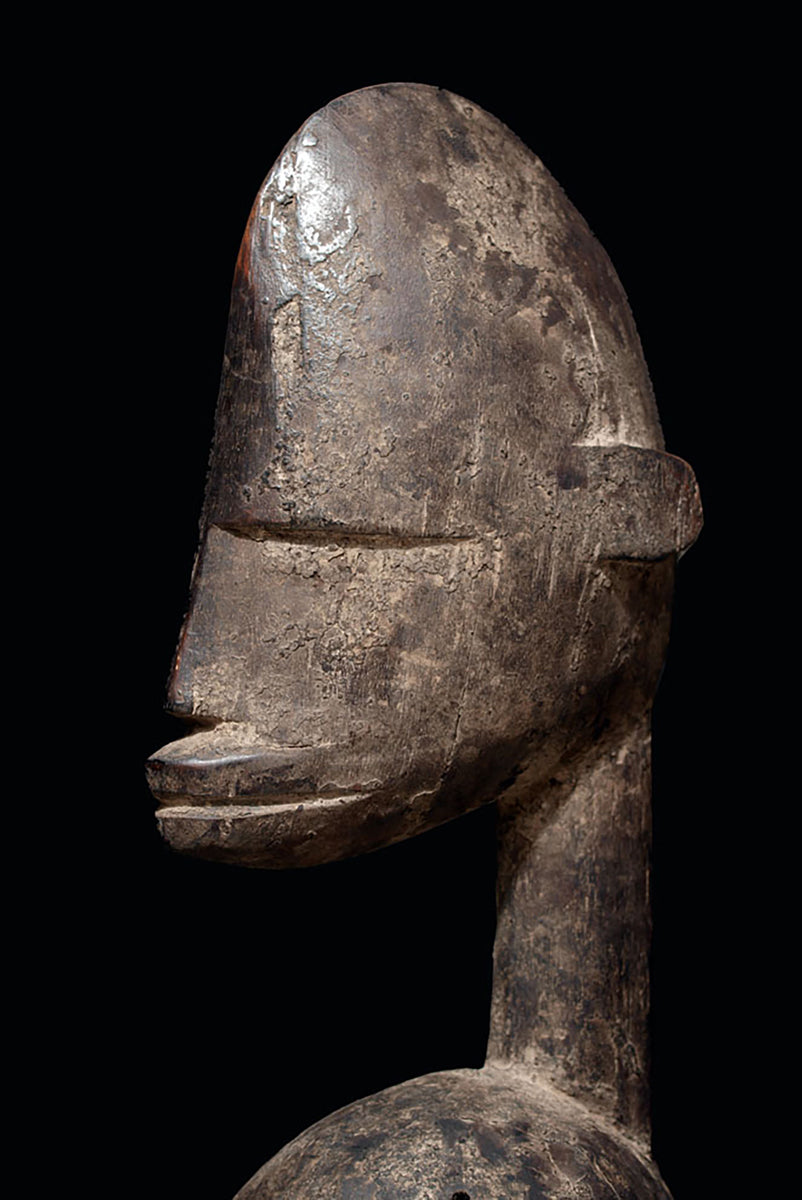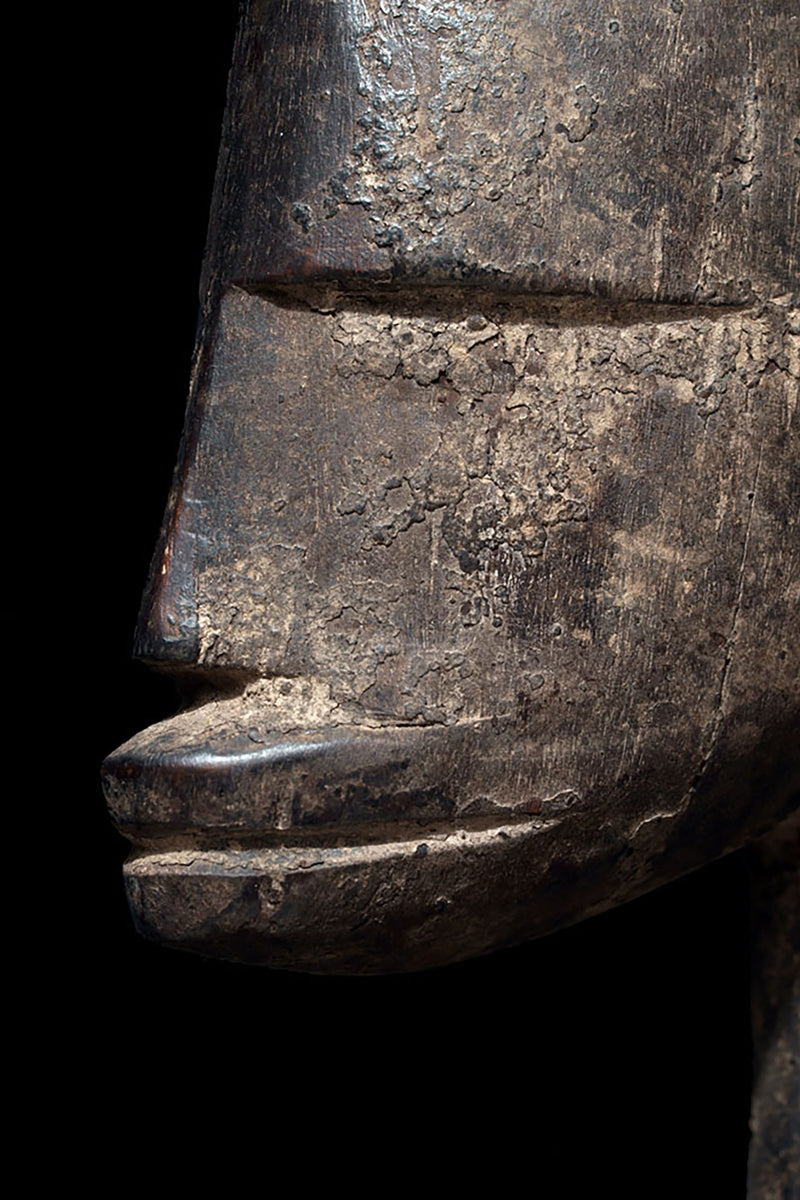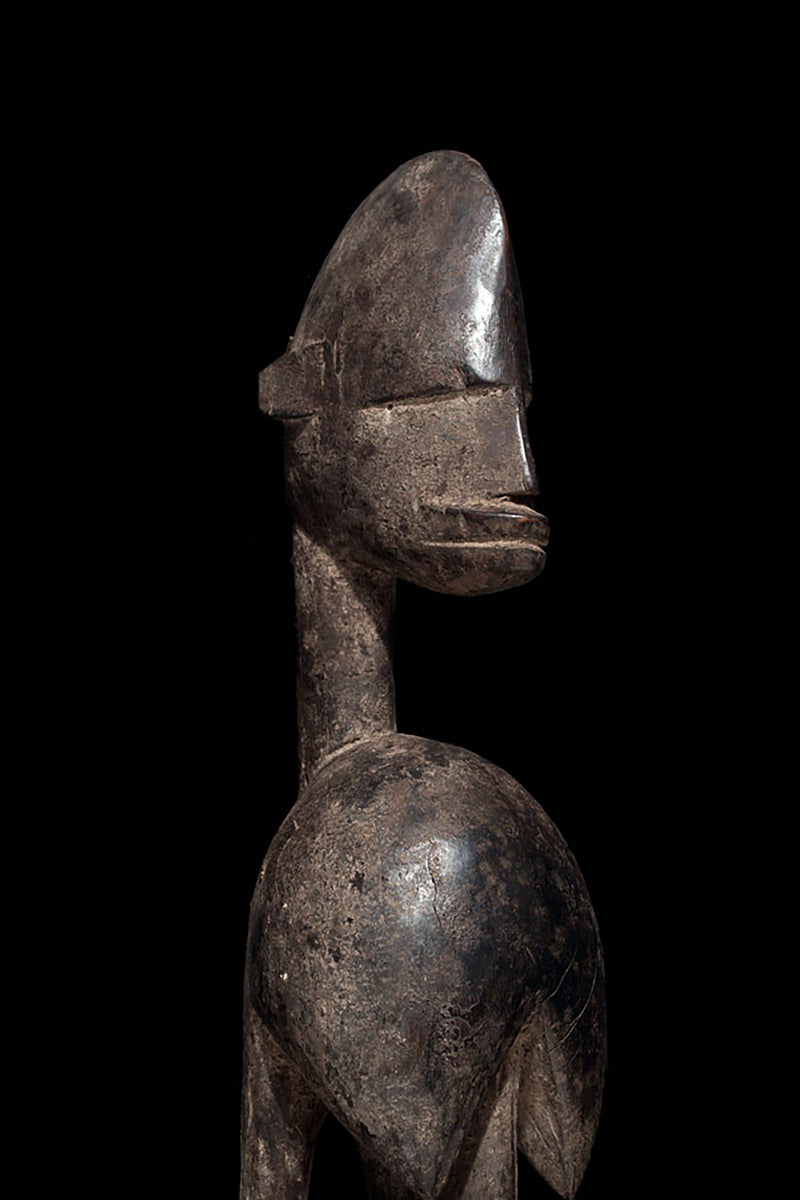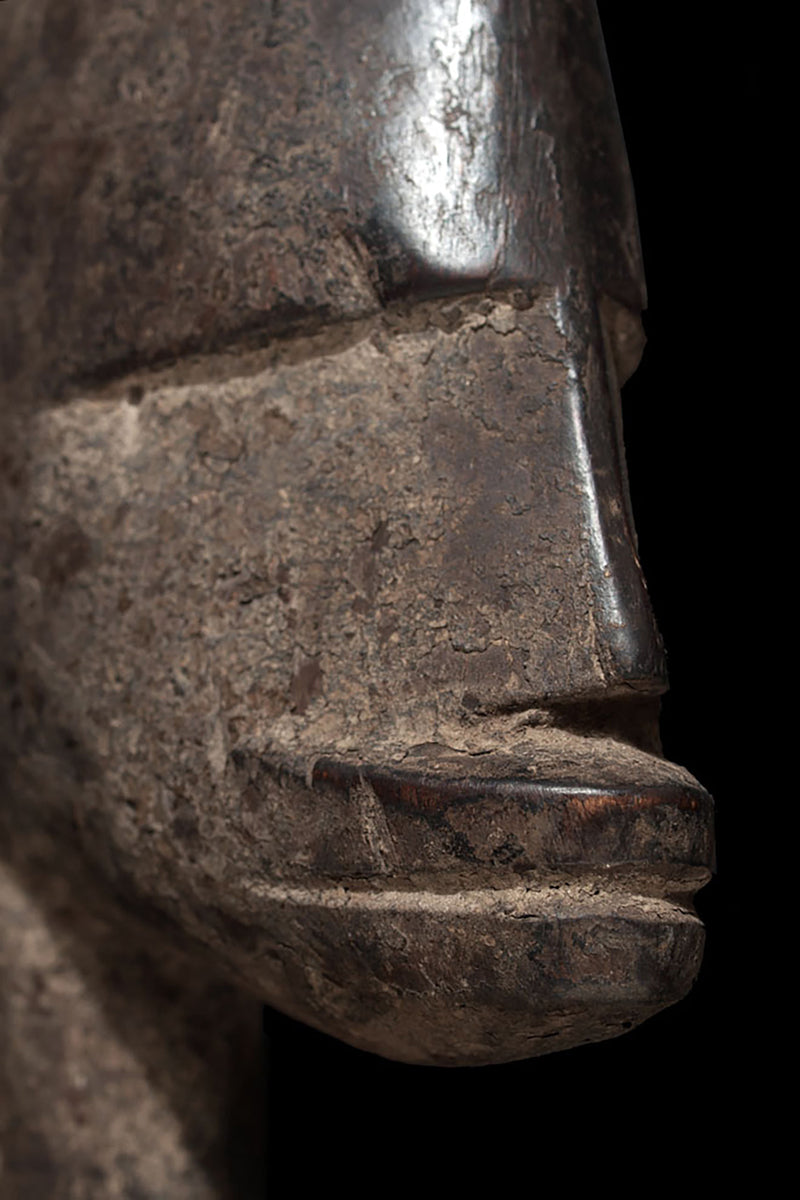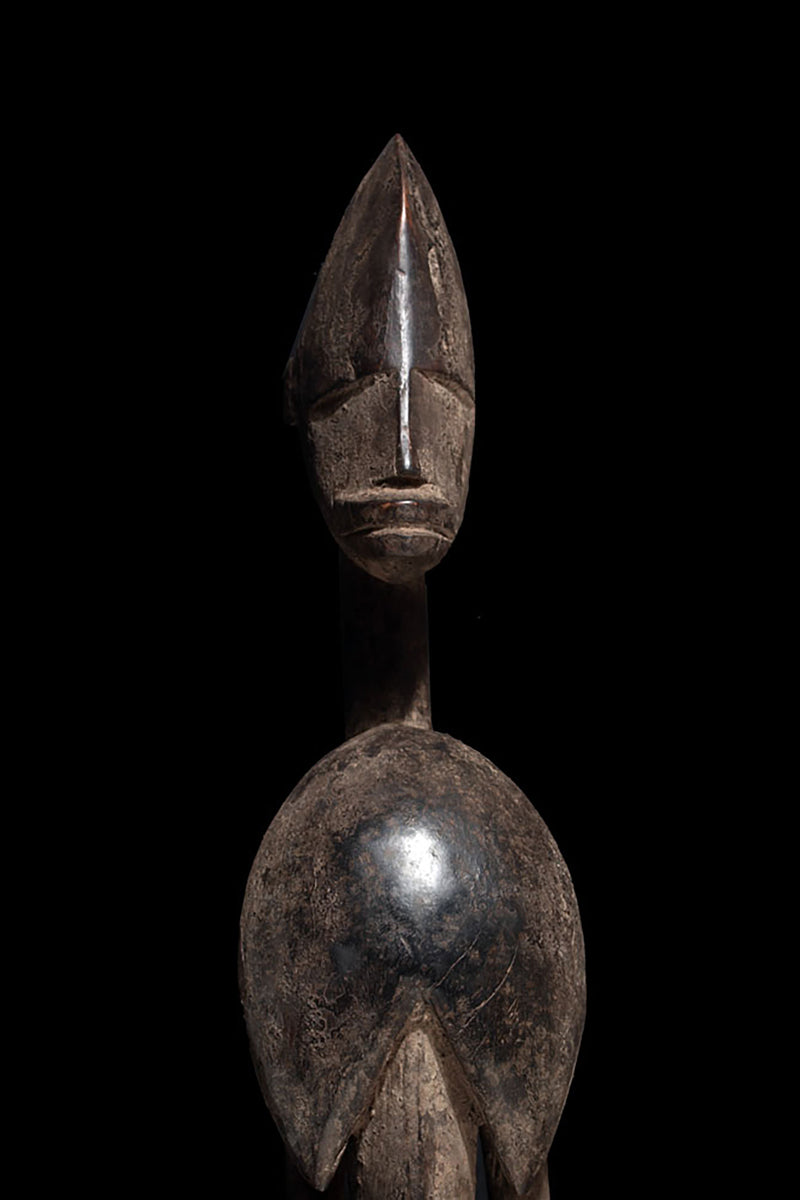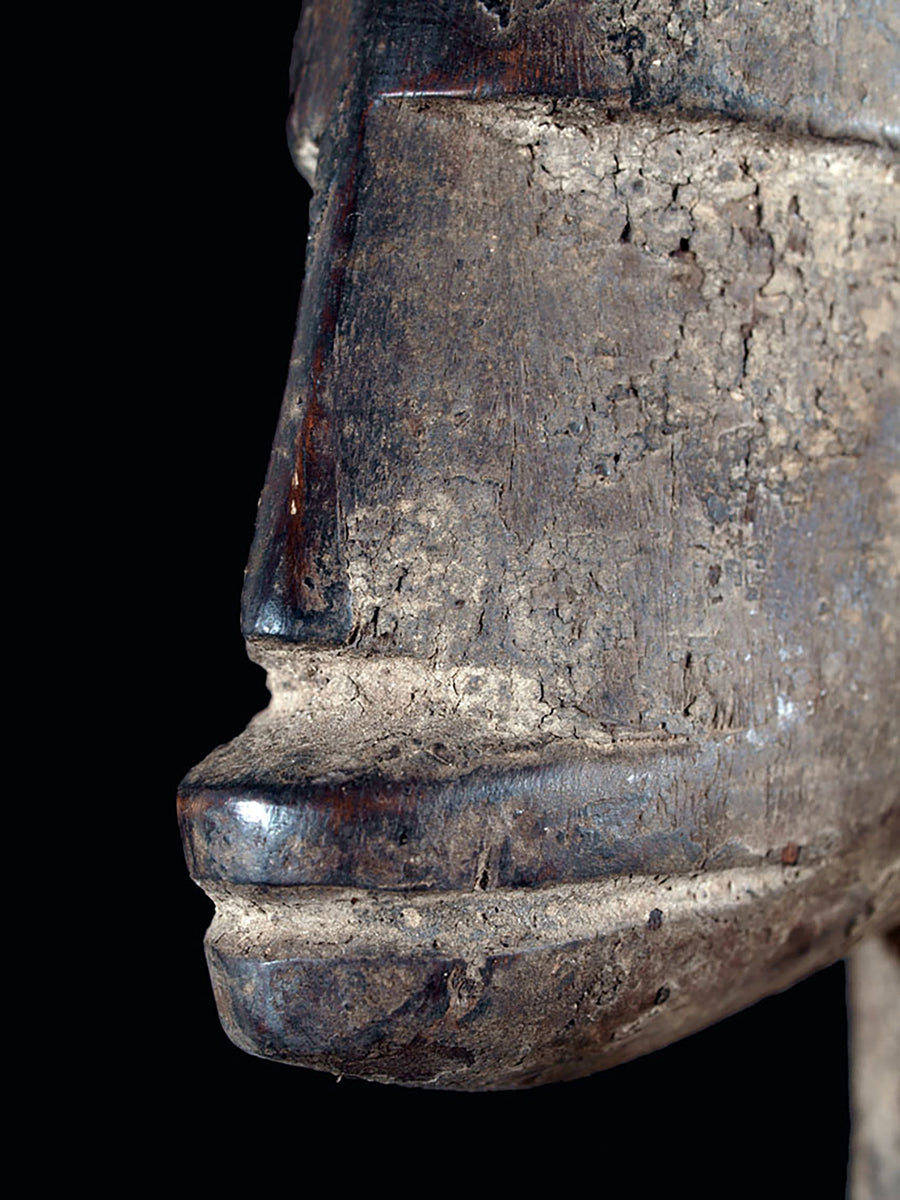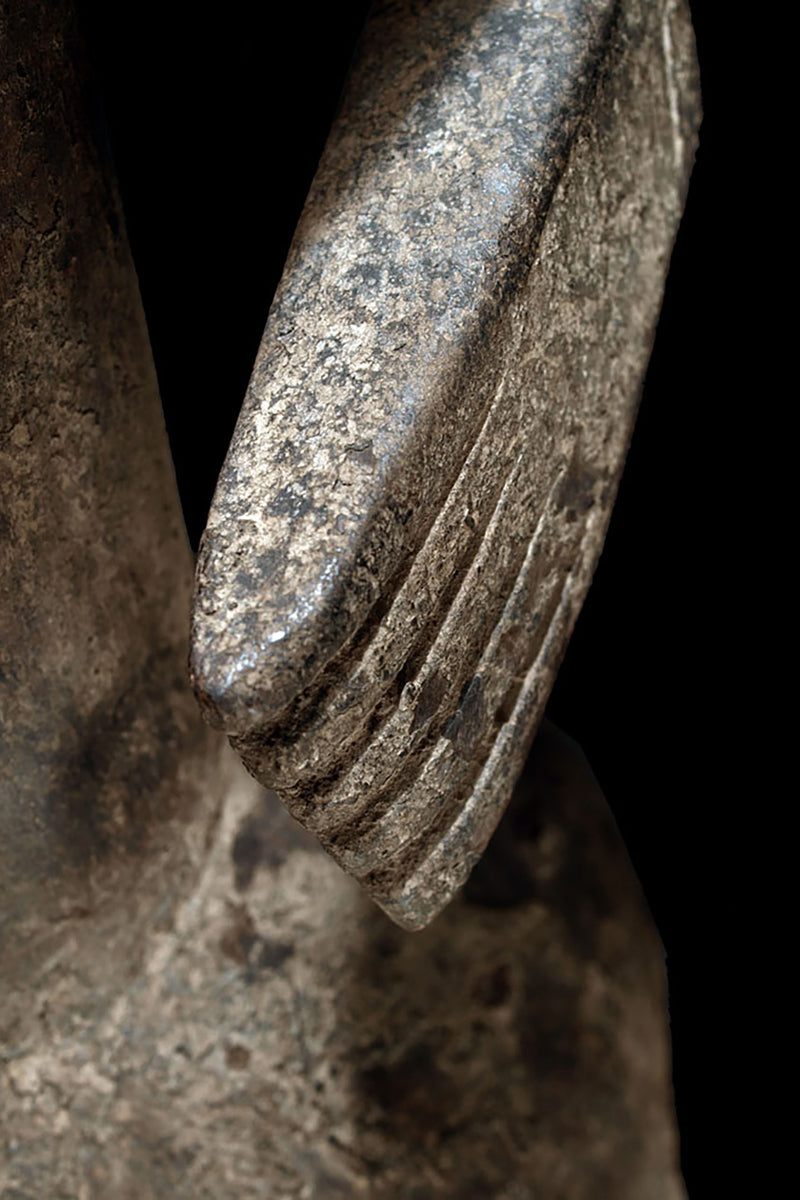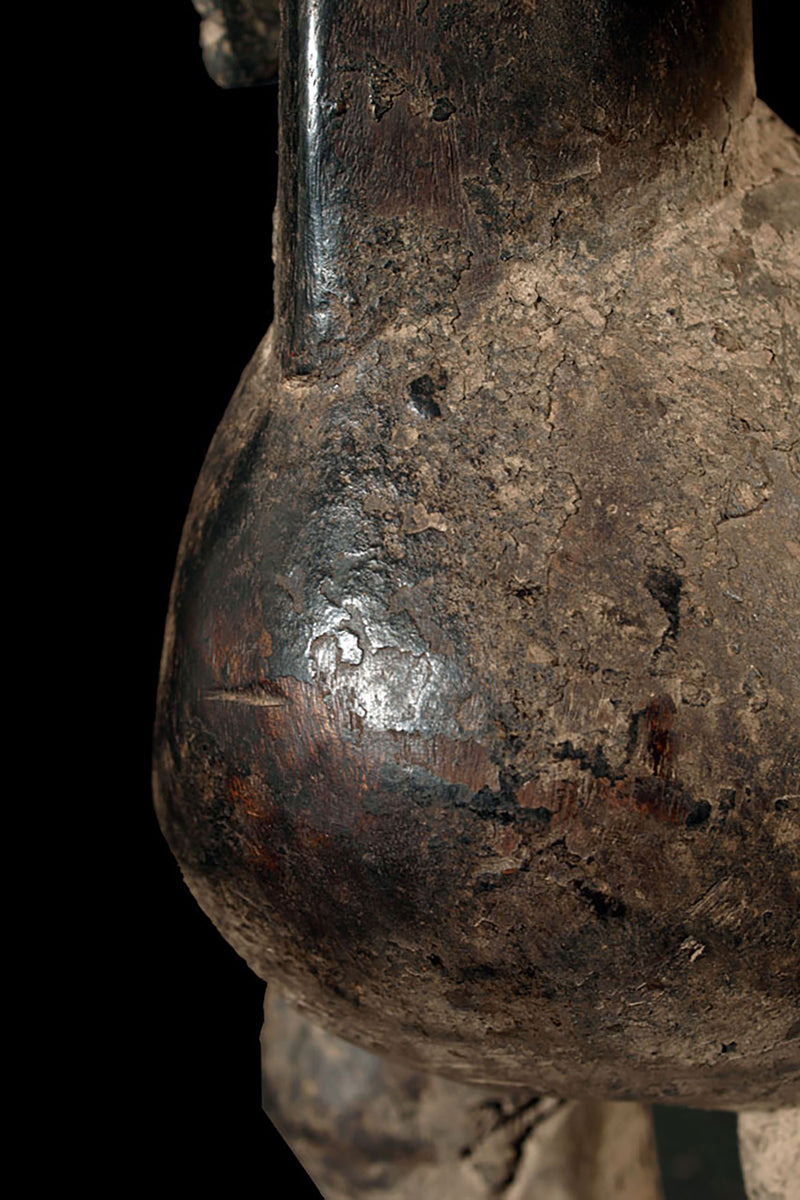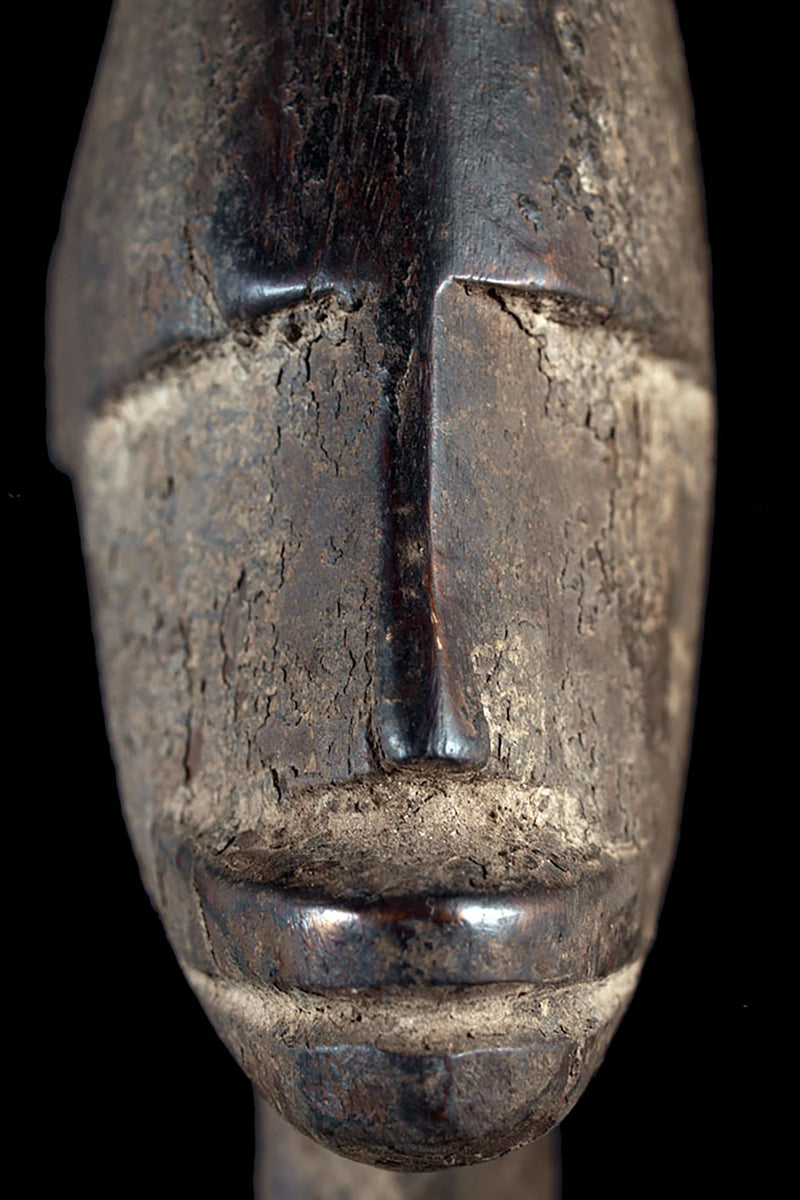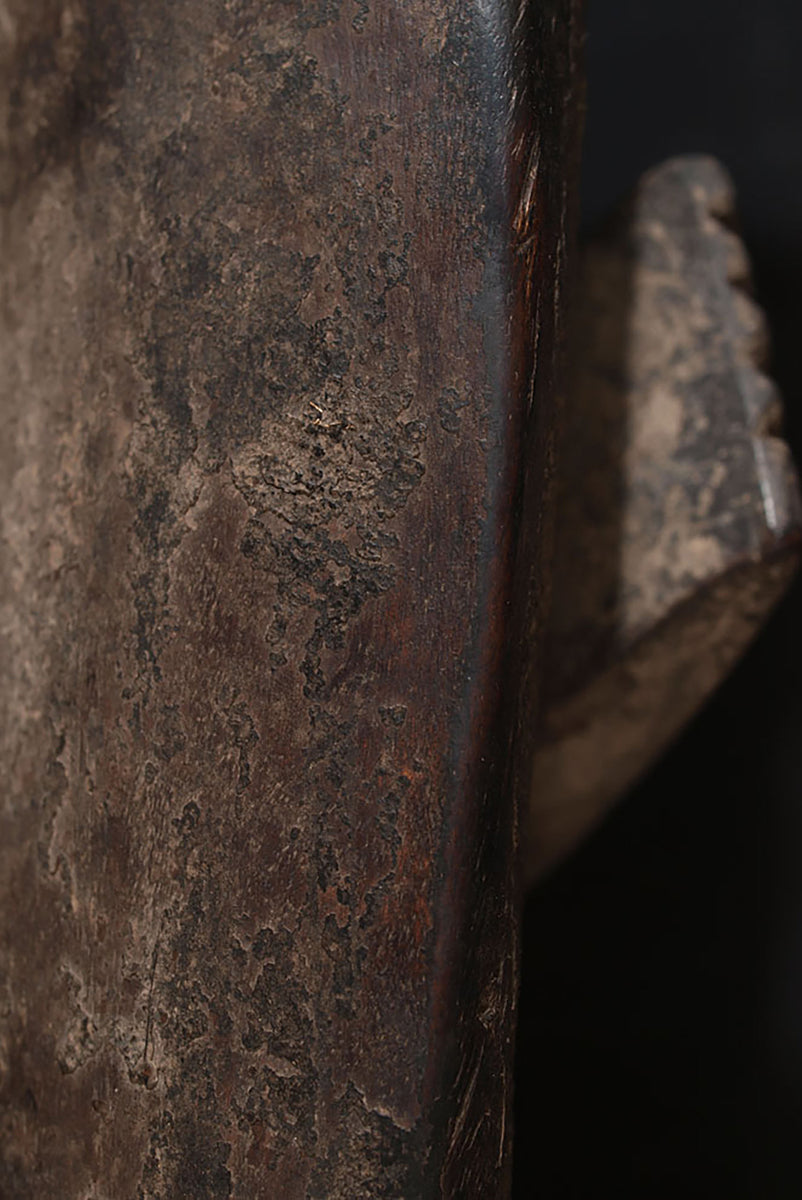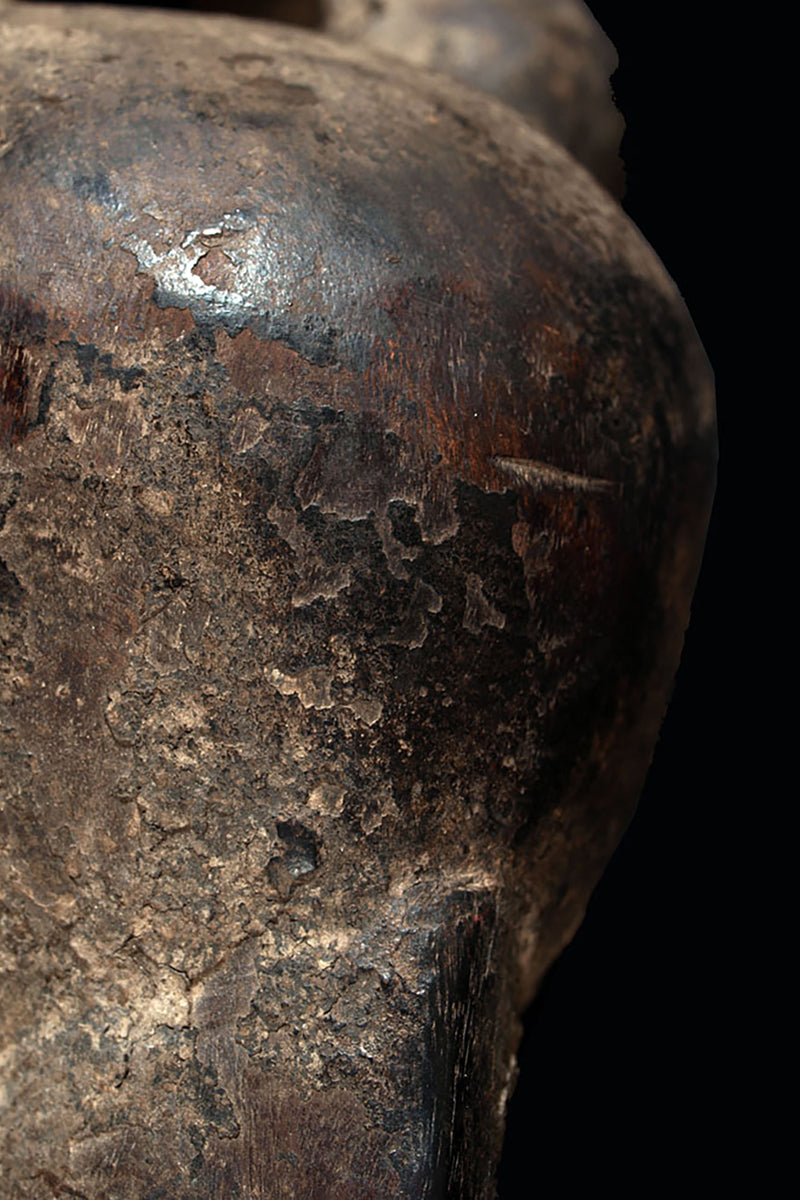Galerie Wolfgang Jaenicke
A female d'Jonka ancestor figure
A female d'Jonka ancestor figure
Couldn't load pickup availability
A female d'Jonka ancestor figure of high abstract form; with remanant of a sacrification patina, heavy, hard Lenke wood. A d´Jonka spulptures with a sacrification patina is rare and unusual, normally the d´Jonka, who are celebrating their sacrifices in front of the figures, are not touching the sculpture itself with the objects of the sacrification.
The Jonka sculptures from the Bla region in Mali represent a fascinating example of cultural and artistic exchange in West Africa. Bla sits at a crossroads where the Bozo, Bamana, and Senufo peoples’ traditions intermingle, and this convergence is reflected in the sculptures’ form and function. These figures are often ritual objects, created to serve spiritual and social roles in their communities.
The Bozo people, primarily known as river fishermen along the Niger, focus much of their artistic expression on masks and figures connected to water spirits. Although they do not traditionally produce Jonka sculptures themselves, some of their symbolic motifs, particularly those associated with water and nature, seem to influence the artistic vocabulary found in the Bla region. The Bamana, on the other hand, have a strong sculptural tradition characterized by wooden figures used in initiation and agricultural rites. Jonka sculptures share formal characteristics with Bamana works, especially the use of stylized human forms and symbolic patterns, reflecting a similar role as spiritual and protective figures. Meanwhile, the Senufo are renowned for their elongated and finely carved sculptures tied to the Poro initiation society. While Jonka pieces are not strictly Senufo in style, they incorporate certain thematic and symbolic elements such as animal motifs and spiritual representation, pointing to the porous cultural boundaries in this area.
This blending of artistic and spiritual elements makes the Jonka sculptures a unique testimony to the interaction between these ethnic groups. The sculptures embody a hybrid style that bridges Bozo symbolism related to water and nature, Bamana abstraction and ritual function, and Senufo thematic emphasis on spirituality and initiation.
Wolfgang Jaenicke, a n academic dropour. researcher and gallery owner specializing in African art, has written insightful blog posts about these cross-cultural influences. On his site, WolfgangJaenicke.com, he often explores how Malian sculptures like those from Bla reflect overlapping traditions, especially highlighting the dialogue between Bamana and Senufo styles and their influence on less widely known groups like the Bozo. His writings provide valuable context and visual examples that help deepen the understanding of how Jonka figures function not only as art objects but as active participants in community rituals.
In addition, online catalog descriptions from museums such as the Metropolitan Museum of Art or the Smithsonian’s National Museum of African Art emphasize the ritual use of these sculptures and their mixed stylistic heritage, which resonates with Jaenicke’s observations. Several African art blogs, including Wolfgang Jaenicke’s, offer accessible interpretations that underscore the dynamic cultural exchanges shaping the art of the Bla region.
Height: 73 cm
Weight: 3,2 kg


